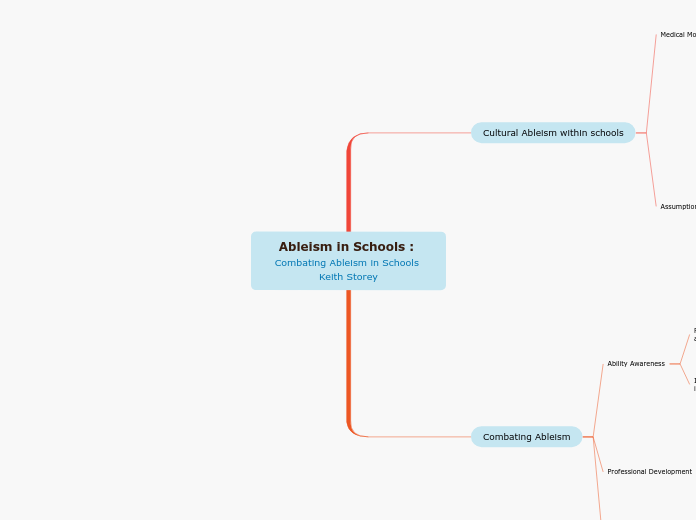par olivia digiammarino Il y a 4 années
460
Ableism in Schools : Combating Ableism in Schools Keith Storey

par olivia digiammarino Il y a 4 années
460

Plus de détails

To name your story, you have to think about the overall message and what you want your audience to understand from the story. Also, make it relevant and easy to remember.
The middle of the story is where you add layers of complications that will lead to the end. Reveal more about the character's journey. Did their personality go through changes? How did they overcome the challenges? And as you build up the story’s central conflict, make it more personal to that character. Also, from the middle act, you have to lead into the final act.
There wouldn't be any tension and excitement in your story if there weren't any obstacles in your character's way.
A story is nothing more than a character overcoming a series of difficulties to reach the desired goal. Obstacles usually create suspense and conflict. In overcoming obstacles, there is growth: weak becomes strong; hatred turns into love; sadness into happiness; wrong into right; lies into truth; or evil becomes good.
See a few examples below:
Your character(s) need(s) motivation in order to solve the challenge(s).
Secondary characters might also have motives that lead them to cross paths with the main character or which might trigger them to help the main character.
Use modern representations of disabled people as experts in their field not just as people with a disability.
Creating points of inclusion such as ASL club, Disability Pride Club, Equity Club.
Why does your character need to confront this challenge? What does he/she expect to accomplish by solving it?
See a few examples:
Not limited to spec ed teacher.
Professional Development that gives teachers an opportunity to understand what it's like to have an LD.
Each story has a main character and that character usually needs to solve a problem or challenge. The character's challenge is the one that creates tension throughout the story.
Type in any other challenges which other characters in the story need to face.
Identify which disabilities are well represented and whether they are part of the community or not.
How can disabled students work to represent themselves through student government/ school wide initiatives.
In most stories, there are 3 challenges. The number 3 is a mystical number symbolizing completeness. Try to come up with interesting challenges with which your character needs to struggle.
See a few examples below:
Consider the Rights Based Disability Model; increase the agency of students to require their needs are met with advocacy training (for either student or parent)
In the beginning of the story (or the exposition), you will need to introduce the setting and characters. You might also want to introduce the main conflict. This part of the story is important because it gives the reader necessary background information and maybe even a first insight into a character’s personality.
The setting (time & place) of a story can change throughout the plot.
The weather is an important element in your story because it can highly influence the ambiance and the mood of the characters.
Not given opportunities to pursue meaningful post secondary education / work.
The most affected character is the main character. Write down here if he/she is affected by these weather conditions in any way. For example, if they lost a family member or their home during a hurricane, etc.
The incorporation of students with intellectual disabilities in a mainstream classroom will bring down the overall achievement of non-disabled students.
Decide if you want to include an element of nature in your story. For example, a rainbow can be a very nice choice for a happy ending. The mist in a story can represent mystery and secrets. A thunder can appear in the background at the moment when the 'bad guy' of the story makes its appearance, etc.
Students should be removed from classes
Does your story include catastrophic weather? See a few suggestions below or add your own:
- hurricane, earthquake, storm, etc
The time of the story can also change. It can describe the event of a single day or can include an entire year's plot. Anyway, don't forget to mention it.
Limited understanding of how to modify movement or centre a physically disabled student in activities.
Projected pity onto the student
Your story can take place wherever your imagination will take you to.
For example: in an elevator, in an enchanted forest, etc. Don't forget to give details of the environment each time the setting changes, otherwise, the story can be confusing. Also, mention the seasons as each of them has unique weather and events.
A diagnosed learning disability will prevent a student from being accepted into university or the idea that you aren't capable of Post Secondary Education.
Students are lazy and shouldn't need to be accommodated otherwise it will act as a crutch to their long term skills.
Characters are essential to a good story. Usually, the protagonist(s) is/are the most affected by the plot. Introduce a character by focusing on their actions, interests, and occupation, as the physical appearance doesn't make a difference in most cases.
There is a system of analysis of the disability/body/mind
Accommodations and Modifications are given to the student in an effort to assimilate them with their same-age peers.
Diagnoses takes the forefront of the conversation
Type in the name of your character.
Classroom Removal
Add other qualities/attributes of the character.
Students engage in ABA therapy
What is your character's main goal?
Streaming
Which traits best describe the character's personality? Choose more if necessary:
Use of psychoeducational assessments
Choose the type of your chacter: